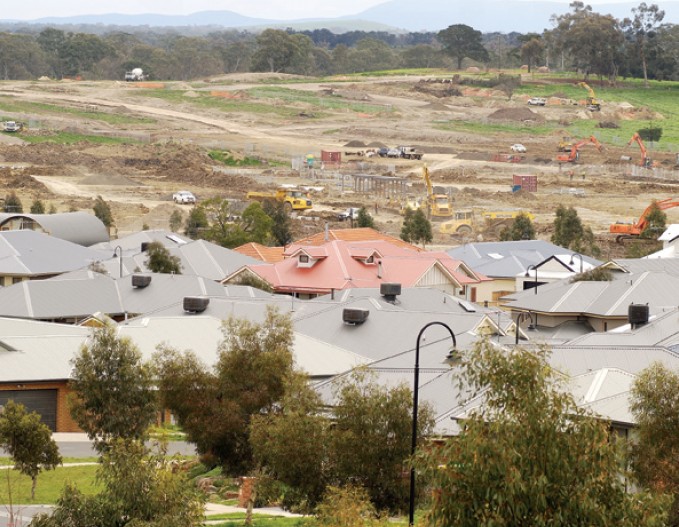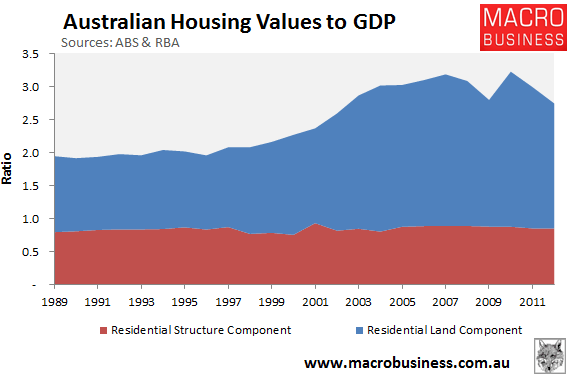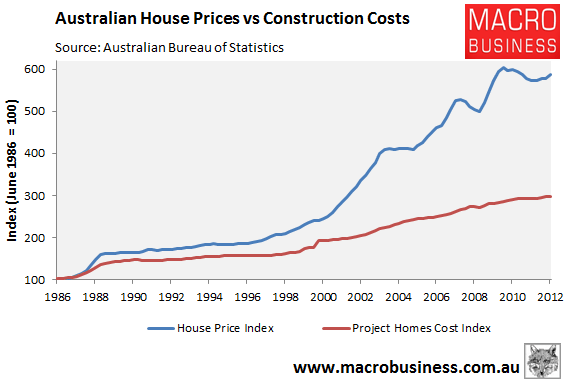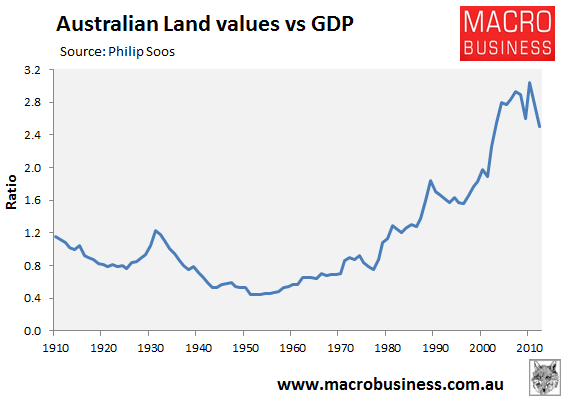
As argued previously, the sharp escalation of Australian home prices since the mid-1990s has been caused primarily by a surge in land values, which roughly doubled in size relative to the size of the economy, as measured by GDP (see next chart).

The explosion of land values is also reflected by the below chart showing the growth of house values (including both structures and land) far outstripping the growth of the ABS project homes index, which measures the cost of building new dwellings (excluding the land):

On Friday night, Prosper Australia released a brand new long-run dataset on Australian land values, which has been painstakingly developed by Philip Soos, who is a research Masters candidate at Deakin University as well as a researcher for Prosper Australia. The data has been pulled together from a variety of public and private sources, including from economists Robert Scott, Doug Herps, Alan Taylor, Terry Dwyer and Nigel Stapledon.
While there is lots of useful data in the series, my favourite dataset is illustrated by the below chart showing the ratio of Australian land prices (residential, commercial and rural) to GDP:

As you can see, land prices relative to GDP doubled between 1996 and 2010. And while land values have deflated somewhat, it would appear they have much further to fall.
My long held view is that residential land prices (and by extension house prices) will experience a “slow melt” whereby values relative to GDP deflate back to their mid-1990s (pre-boom) level. The big question is whether this deflation will occur via prices falling outright or by GDP growth outstripping price growth. With any luck (from a financial stability perspective), the adjustment will take place more through real price reductions than nominal price falls. But the process could take a long time.
Soos’ land price dataset can be downloaded from here.

